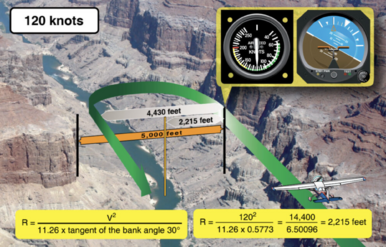Turn Radius (Aircraft Maneuverability)

Turn Radius in aircraft maneuverability is the horizontal distance an aircraft travels while turning, influenced by bank angle and airspeed, with smaller radii achieved at lower speeds and steeper banks. Early aircraft like the Wright Flyer used coordinated turns with wing warping and rudders for maneuverability, demonstrating the importance of turn radius in flight.
Definition
Turn radius is the horizontal distance an aircraft travels while turning, measured from the center of the turn to the aircraft.
Factors Influencing Turn Radius
- Bank Angle: Steeper bank angles result in tighter turn radii.
- Airspeed: Higher airspeeds lead to larger turn radii.
- Rate of Turn: A standard rate turn (3 degrees per second) is a common reference point for aircraft maneuvering.
History
- Early Aircraft: The Wright brothers' Wright Flyer pioneered coordinated turns using wing warping and rudder control, demonstrating the importance of maneuverability and turn radius.
- Fighter Aircraft: In fighter aircraft, turn radius is a critical factor in basic fighter maneuvers, with pilots often using out-of-plane maneuvers or pitching up to minimize turn radius during a "radius fight".
- Evolution of Control Systems: Modern aircraft use advanced control systems to enhance maneuverability and control turn radius, including fly-by-wire systems and sophisticated flight control algorithms.
Significance
Understanding turn radius is crucial for pilots to safely execute maneuvers, especially in tight airspace or during combat situations.
Formula
The turn radius (R) can be calculated using the formula: where V is the true airspeed, g is the acceleration due to gravity, and n is the load factor.

